The art and science of breeding chickens. See my successes and failures.
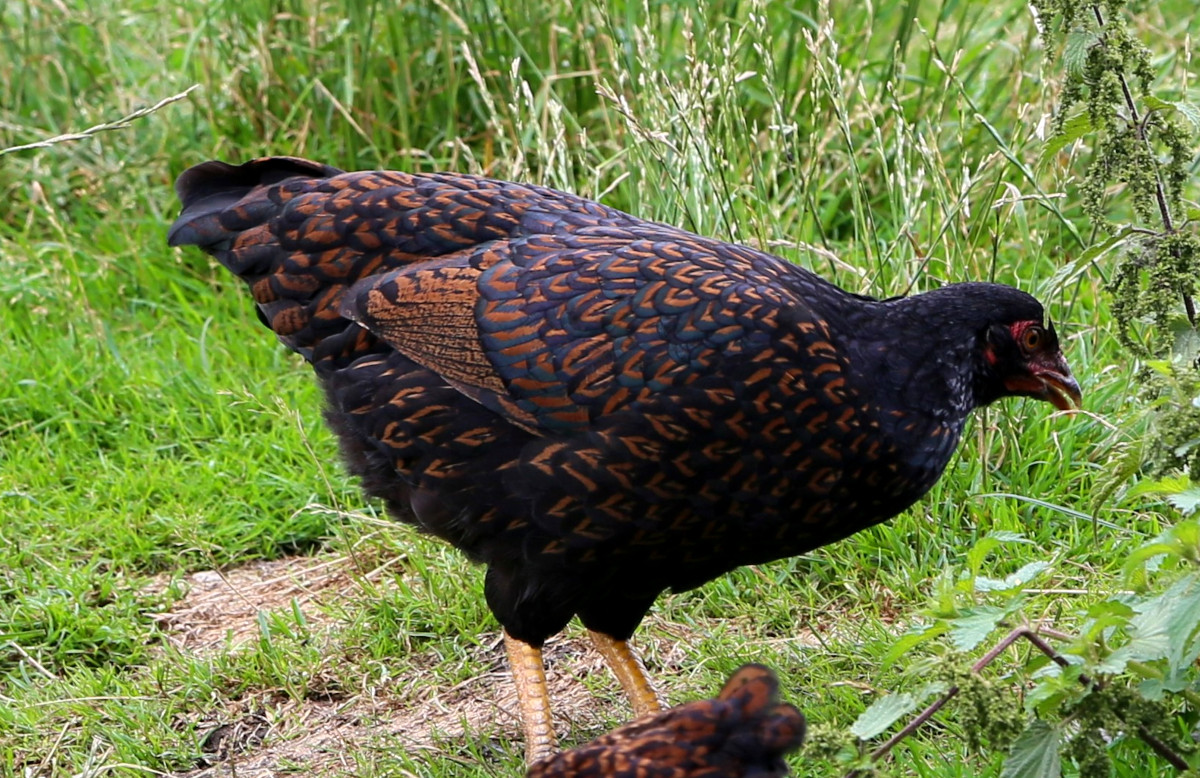
Breeding chickens has been a time-consuming and challenging process, but it's also incredibly rewarding. I love seeing the results of my breeding program and improvements I have been able to make to my strains.
Table of Contents
- Let nature take its course:
- A humble beginning.
- The terms, words and definitions you might find useful when breeding chickens:
- Selection criteria for breeding stock:
- Is the hen or cockerel more important when breeding chickens?
- My breeding failures and successes:
- My Advice for your first attempt at breeding chickens:
Anyone can breed chickens, they do most, if not all the hard work for you. There is little to do other than to let the chickens get on with what they do best and making sure they are well fed and in good condition.
Proper feeding is essential in breeding chickens and you may need to use a breeder ration or add some supplements to the diet.
Let nature take its course:
On a purely physical level breeding chickens starts with putting males and females together and letting nature take its course.
Chickens are pretty old-fashioned when it comes to courtship and romance and setting the mood is not required.
Breeding chickens at home is relatively easy, in chicken society the males are polygamous, that is, one male will mate with several females. This makes the production of large numbers of fertile eggs relatively easy.
Poultry romance starts with the rooster strutting his stuff and doing a little dance to impress the ladies, just like a barnyard version of Saturday Night Fever! The dance involves dropping one wing and dancing in a circle with the lowered wing on the inside. He may also pick up food and drop it for her to get her attention.
Chicken foreplay involves chasing the hen around and grabbing their ruff feathers often with considerable squawking. The hen will then squat down and flatten herself.
Below: My light Sussex line. I have had these birds since late 2011. You can see the dirty marks on the hens back where the cockerel has been treading.
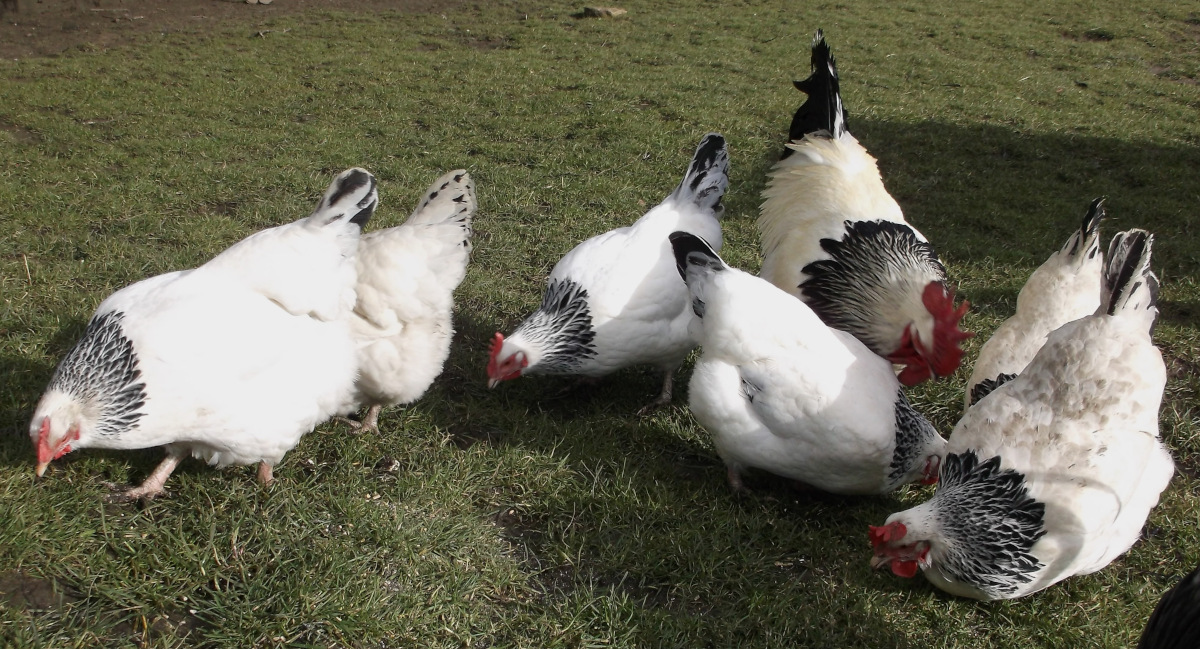
The next behaviour is the tread. The rooster climbs on to the hen's back, makes treading motion and mating occurs when the rooster dips his tail to the side of the hen's tail and spreads his tail feathers so that their cloacae come into contact.
The cloacal kiss completes the mating process and the process can be over with in as little as 15 seconds. The female will usually shake her body and fluff her feathers afterwards.
If you have fertile birds that are not stressed, overstretched and in good health within a few days you will get fertile eggs. The average hen will produce a fertile egg three days after mating and for another 20 days or so after that.
Mating behaviour follows a diurnal pattern and is best seen early in the morning or in the evening before roosting.
Crucial to reproductive success with chickens is the proper selection and storage of your hatching eggs. After this you just need to incubate the eggs for 21 days and wait for the chicks to hatch.
Below: I often use broody hens to rear chicks. Here is 2 mother hens with their chicks.
Of course, there's more to chicken breeding than just genetics and selection. There's also the practical side of things, like taking care of the chickens and making sure they have everything they need to stay healthy and productive.
A humble beginning.
My journey began in the late 1990's with a small backyard coop, home to a flock of eight Barnevelder hens and a gold laced rooster.
There are many different ways to breed chickens. Some people breed them for egg production, while others breed them for meat or for their unique feathers or other physical characteristics.
Below: Nowadays I breed chickens for show and for egg colour. This is a mix of 6 from my egg flock.
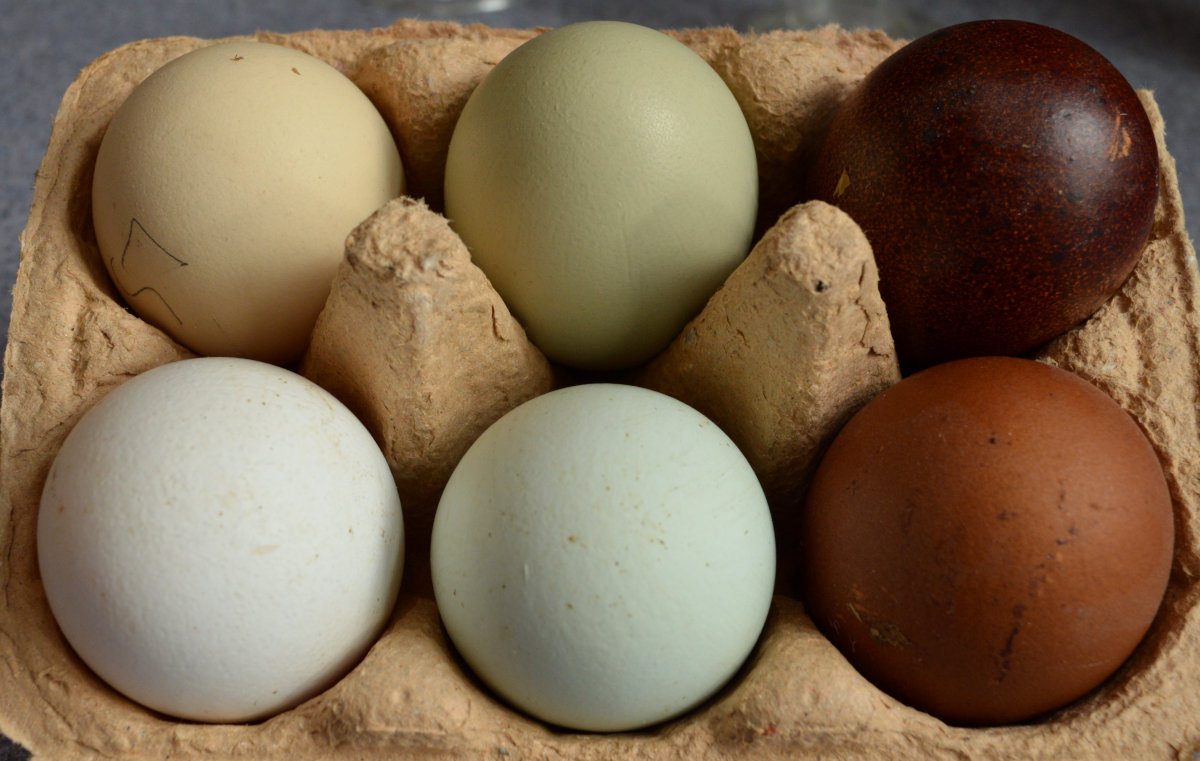
Both my strains of Copper Marans and Cream Legbars would be thrown out of a poultry exhibition but they do produce amazing eggs.
I never set out to produce meat birds but any endeavour involving poultry production is going to lead to a surplus of males as even hens that are not suitable for breeding still lay lots of lovely eggs.
Below: My Cream Legbars would never make the grade in a poultry show but hey do produce the most amazing coloured eggs.
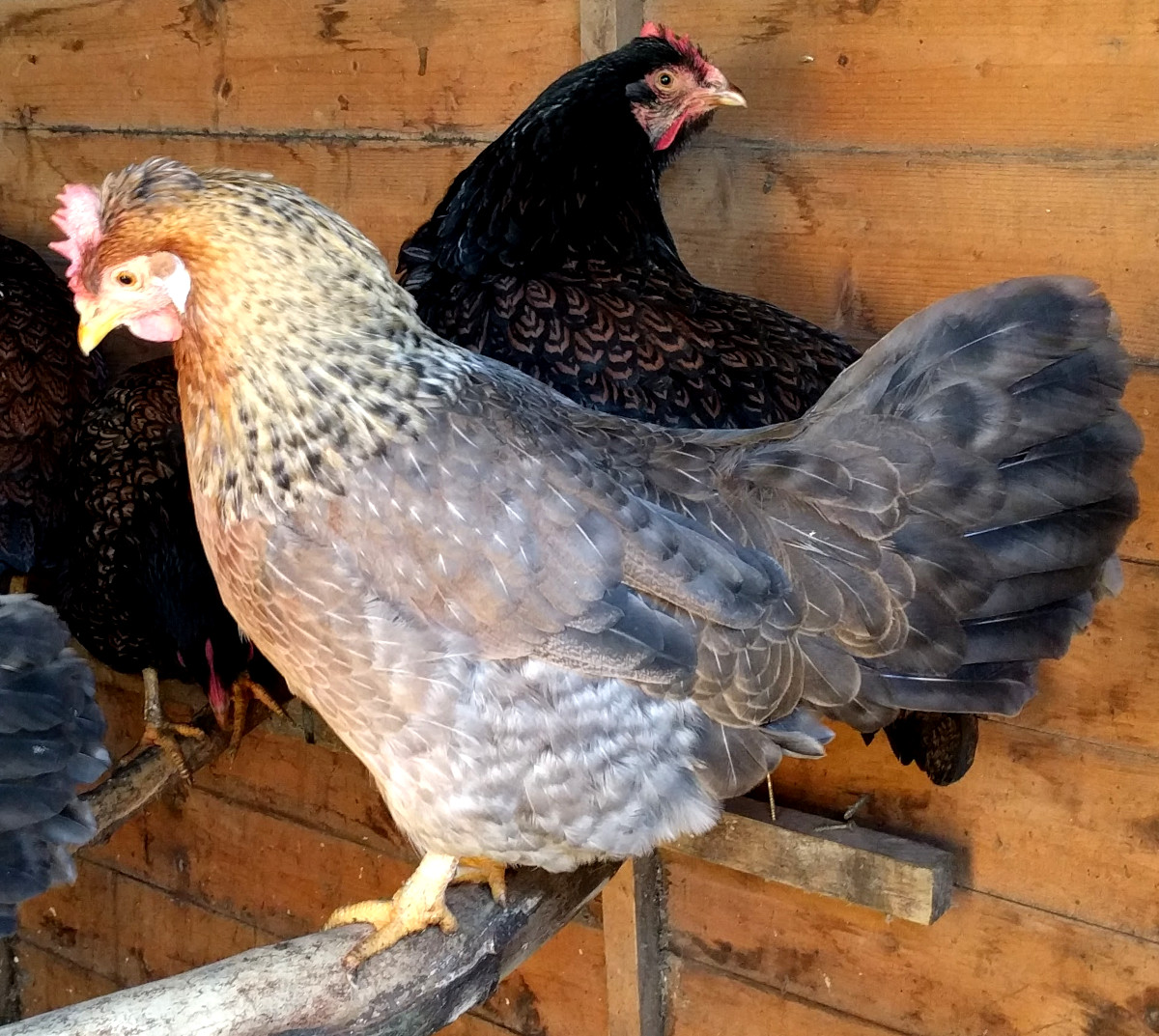
I selected them for eggs, temperament and their ability to keep their nests clean.
You may want to find a mentor who can help you get started.
The terms, words and definitions you might find useful when breeding chickens:
- Dam: The female in the breeding program
- Sire: The male.
- Breed: A group of chickens with a distinctive body shape and the same general features and weight.
- Variety: A subdivision of a breed, according to plumage colour, comb type, etc.
- Line: A group of chickens that are related to each other and share certain traits.
- Linebreeding: Breeding chickens that are closely related to each other, like brother and sister or father and daughter.
- Outcrossing: Breeding chickens that are not closely related to each other.
- Backcrossing: Breeding a chicken to one of its parents.
- F1 hybrid: The offspring of two unrelated parents.
- Sex-linked gene: A gene that is located on the sex chromosome.
- Recessive gene: A gene that is masked by a dominant gene when both are present.
- Dominant gene: A gene that expresses itself even if a recessive gene is also present.
- Phenotype: The observable characteristics of an animal, such as its feather colour or body shape.
- Genotype: The genetic makeup of an animal.
- Selection: The process of choosing the best chickens from each generation to breed together.
- Culling: The process of removing chickens from a flock that are not desirable for breeding.
- Heritability: The degree to which a trait is passed down from parents to offspring.
- Inbreeding coefficient: A measure of how closely related two chickens are.
- Heterosis: The increased vigour or performance of an offspring that is produced by two unrelated parents.
- Trait: A particular characteristic of a breed, may be good or bad.
Selection criteria for breeding stock:
Breeding chickens that exhibit good reproductive traits is essential.
Below: Breeding stunning birds like this Rosecomb bantam takes time.
This includes factors such as fertility (the ability to produce viable eggs), hatchability (the percentage of eggs that successfully hatch), and broodiness (the tendency of hens to sit on and incubate eggs).
Here is a few tips and selection criteria I use when choosing chickens for breeding:
- Have clear goals. This can be a simple as maintaining your flock.
- Make a plan for dealing with surplus males. Hens are easy to find homes for but cockerels is a different story.
- Examine your breeding stock of chickens for good health. I was once told not to breed from a bird that had been ill in the last 12 months and I have always stuck to that.
- Get the correct ration of males to females. Make sure the cockerel has enough hens to keep him amused or he may literally shag the feathers off the hens and this can lead to sunburn and all sorts of troubles.
- Choose birds that are symmetrical down their centre line. Avoid misshapen beaks and bent tails.
- Use chickens that have straight legs and an easy gait.
- The best eggs to collect for hatching are those laid in the birds second spring. Second because the eggs are bigger in the second year which makes for stronger, larger chicks and fertility seems to be better in spring.
- Select birds for mating that conform to their respective breed standard if you a planning to sell the eggs for hatching or to raise on and for the type of breeding you are doing.
- Have patience. Some rare breed take a considerable time to mature a fill out properly and early selection of breeding stock may be wrong.
- Every year you must set a quality line. Do not breed from any bird falling below that line. If you are breeding for yellow legs as I have been recently with my Barnevelders then you need a specific colour in mind. Get a paint colour chart from the DIY store and set your bar for leg colour.
- Keep records. This could involve tracking traits such as egg size, eggshell quality, meat yield, and growth rate.
On a practical level I can recommend removing the tip of the spur or blunting with a nail file as they can damage the hens. In a similar vain I remove a few vent feather in my fluffier breeds to aid with fertility.
Is the hen or cockerel more important when breeding chickens?
There are many and divided opinions about which is the more important member of a pair, the cockerel or the hen.
Below: My Barnevelder eggs won first at the Yorkshire show.
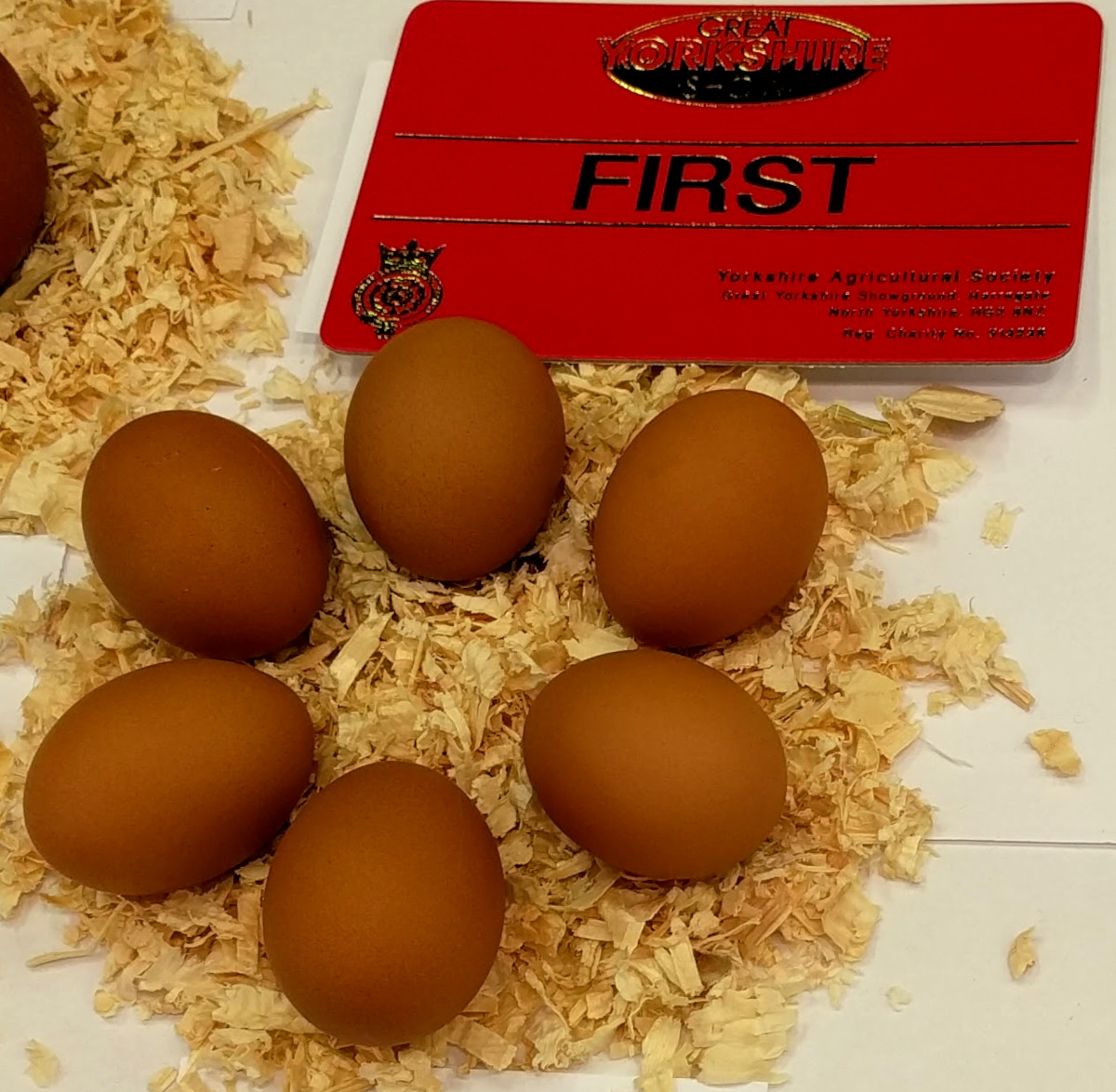
My view is that, as a rule, they are almost of equal importance, but if I have a leaning it is in the direction of the hen, though according to genetic rule, one sex has no more power over the quality of the offspring than has the other sex.
Hens and cockerels are supposed to contribute 50% each but sometimes characteristics belong to a particular sex.
When breeding poultry it is important to remember one cockerel runs with many hens in a breeding pen so make sure he is a good one.
I have learned through many hard lessons that you cannot correct the lacing on the feathers of a Barnevelder hen by the selection of the male, the latter being single laced. Whether the same is true for Wyandottes and other laced types I do not know.
It can be more difficult to judge the feather patterns of the male in some birds and the egg colour follows the Dam or female line more in chickens.
My breeding failures and successes:
I know you have been dying to see the mistakes I have made over the years. I have had show success with both my Silver and Gold laced Barnevleders as well as the eggs of many breeds.
Below: The result of a disastrous crossing in a breeding program.
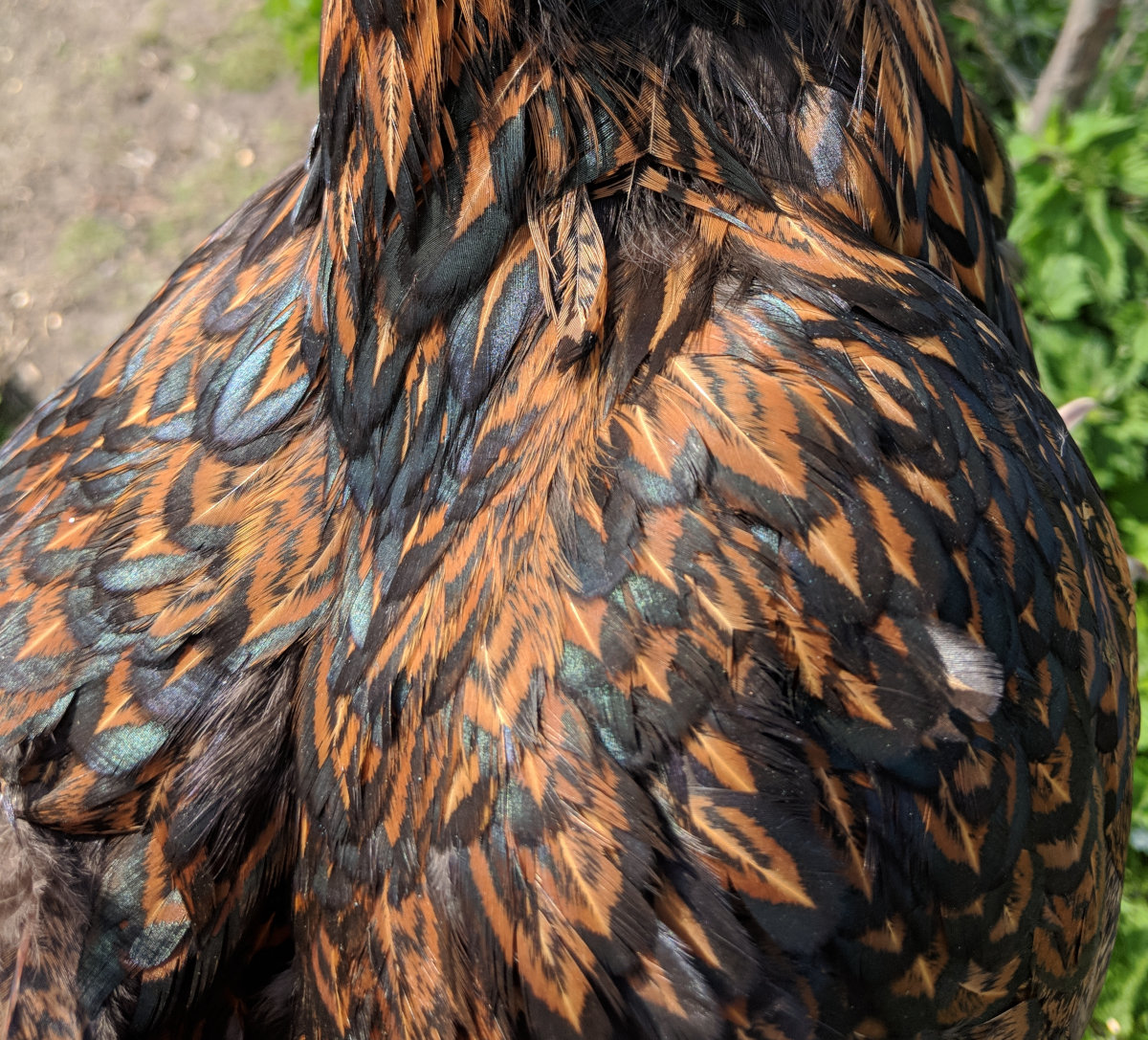
Don't be to worried if you make a mistake breeding, I have learned much more from making a mess of things over the years.
Below: Here is a lovely Light Sussex grower with bright yellow legs instead of white.
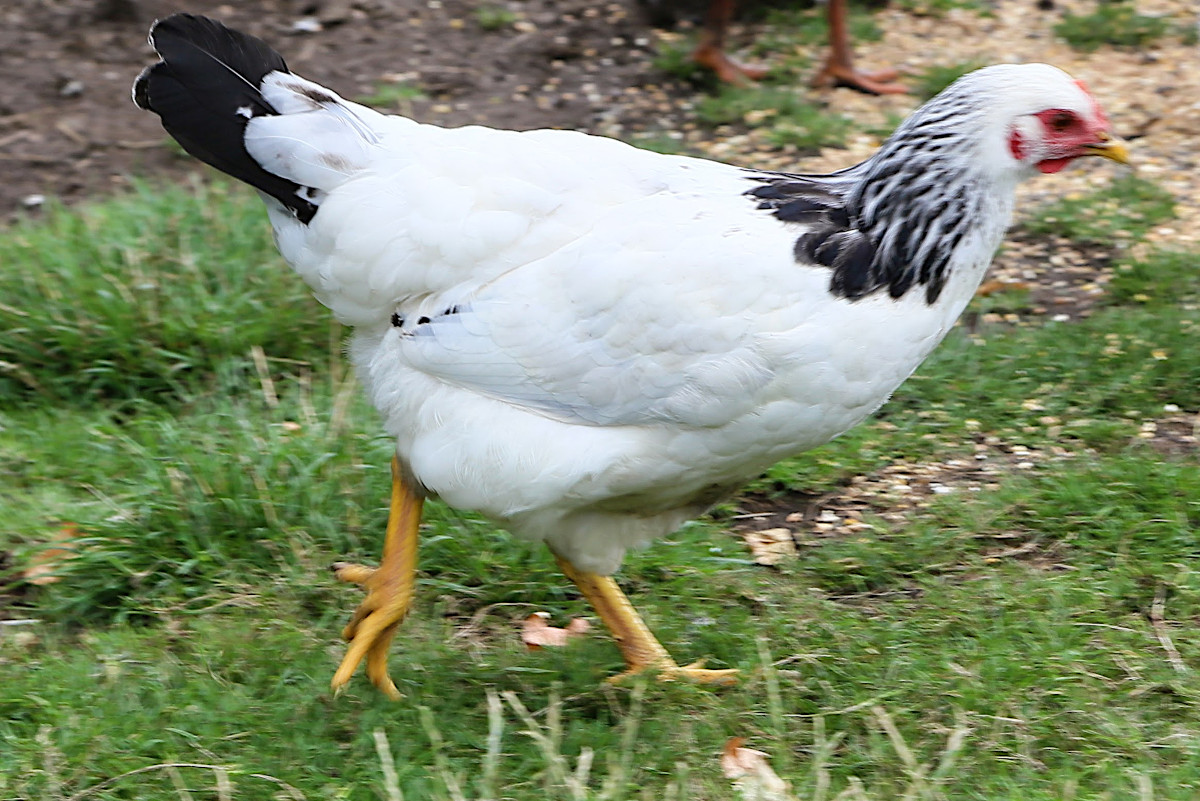
Any animal which has ever had an illness. Was a runt or struggled as a youngster or has had a set-back to its development should never be used for breeding purposes.
My Advice for your first attempt at breeding chickens:
- Decide first if you are going to sell eggs, mature fowls or chicks. It is best to focus on one specific age. This will allow you to standardise your selling practice. If you are going to sell mature chickens, make sure to stick to it. Mature chickens often bring more profit than the younger ones.
- Acquire a popular breed of chicken for your first attempt. It can be either a good egg producer or a meat producer.
- Get the best stock you can afford. Breeding from really good stock birds is of the utmost importance.
- Unless you have found a niche for hybrid chickens I would encouraged you not to crossbreed the birds. There is a saturated hybrid market.
- Plan for and get decent equipment. Your incubator must be 100% capable of producing chicks or else it is should be considered as a waste.
- It is also important that you know your target market. This will help you focus on raising the chickens for a certain market standard. Knowing the price limit is an additional tip that you can use to gain more profits.
